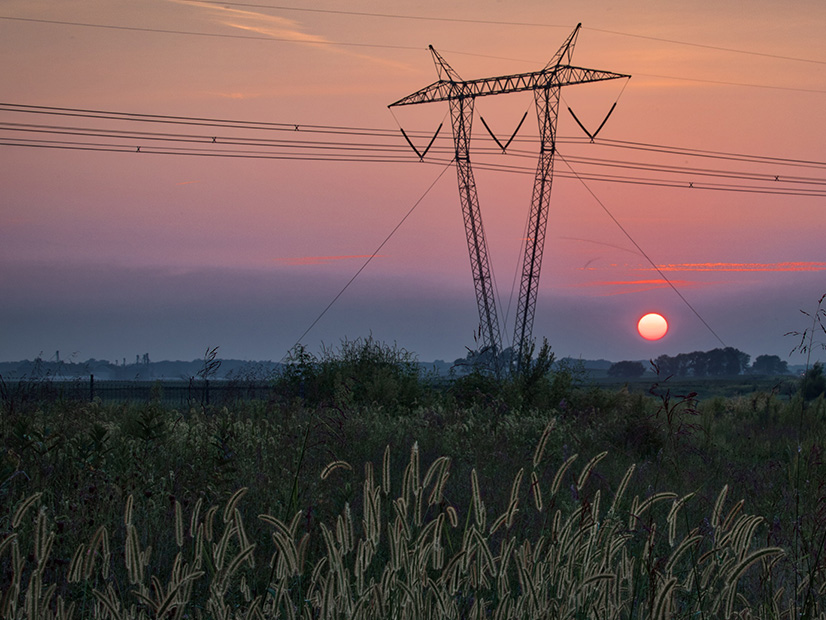MISO’s Independent Market Monitor this year has singled out transmission congestion, heightened ramping needs and undervalued capacity prices as areas of concerns in 2020 and into the future.
The topics are part of Monitor David Patton’s annual State of the Market report, delivered to the MISO Board of Directors’ Markets Committee during a special teleconference Wednesday.
The Monitor’s report drove home several previous warnings about MISO’s future and suggested four market changes, including:
- creating a new uncertainty capacity product that can be deployed in the place of operators making out-of-market commitments;
- better matching up the emergency procedures and pricing of transmission emergencies versus capacity emergencies;
- disqualifying wind generation from providing ramping services; and
- developing individual effective load-carrying capabilities (ELCCs) to be used in more specific capacity accreditations for distributed resources, load-modifying resources, solar generation and battery storage.
Ramping Needs
Patton said MISO’s current wind resources coupled with a coming surge in solar generation will intensify the RTO’s ramping needs. And, he said, when wind generation is used for ramping services, it usually exacerbates transmission constraints.
Wind generation served an average 18% of hourly load in 2020, up from under 12% in 2018, according to the Monitor.

“Wind fluctuations have grown as output has increased. On 27 days during September to December, wind varied by more than 10 GW,” Patton told the committee. “The volatility is becoming increasingly challenging to manage. … It puts a heavy burden on conventional resources to make up the slack. … We need a market that’s going to sustain our controllable resources. We cannot keep the lights on with storage and intermittent resources alone. You do need to supplement those with conventional resources,” he said, predicting that within 20 years, many natural gas plants will burn biofuels.
Patton also said renewables growth paired with transportation electrification stands to change load and congestion patterns. To manage the change, MISO needs better shortage pricing, more expensive capacity prices and a four-hour look-ahead dispatch tool, he said.
He pointed to a new recommendation that MISO develop a real-time capacity product to handle more real-time and day-ahead market uncertainties.
MISO currently makes several out-of-market commitments and “tacitly” relies on offline generators, which yields uplift payments, Patton said. “It’s an indicator that the markets don’t have enough generation … to fulfill commitments.”
Transmission Congestion
Transmission congestion rose 26% in 2020, costing about $1.2 billion, Patton reported. If MISO transmission owners had more dynamic line ratings, congestion could have been about 13% lower, he said.
“It’s becoming the dominant issue for MISO to manage,” Patton said. “We’ve never seen as much congestion coming out of the north, where the wind is located.”
To combat congestion, he said, MISO should develop a means to coordinate transmission and generation outages, lower the generation shift factor cutoff for transmission constraints and more readily define market-to-market constraints.
He also repeated his previous recommendation that MISO adopt ambient-adjusted transmission line ratings.
“Right now, there’s really half of one employee that does this today,” Patton said, suggesting that MISO create a dedicated three- to four-person team to work on the optimized use of transmission lines.
“The economic benefits would pay for themselves 10 times over,” he said.
MISO CEO John Bear said the Transmission Owners Agreement specifies that TOs establish their own line ratings, and that the RTO is limited in what it can dictate. He added that TOs take on risk determining the capabilities of their lines.
“There’s a lot of coordination and work to make this possible,” Bear said. “It’s not just as simple as us adding a few analysts and moving forward,” Bear said.
Capacity Pricing
Unsurprisingly, Patton again criticized MISO’s Planning Resource Auction for its mostly “inefficiently low prices,” something he routinely has called out in his reports. (See MISO Capacity Auction Values South Capacity at a Penny; Michigan Prices Soar in 8th MISO Capacity Auction.) He said the “flawed” vertical demand curve used in the auction continues to be the source of the problem.
“MISO’s markets are not providing net revenues sufficient for investment in new resources in any location,” Patton said.
In addition to his recommendation that MISO develop new ELCCs for different resources, Patton said the grid operator should switch to a capacity resource accreditation that is based on a unit’s availability during the tightest margin hours of the year.
MISO recently mellowed its proposal for a stricter capacity accreditation to include availability during non-risky hours in addition to risky hours as the basis for accreditation. Patton said MISO’s leniency in its accreditation proposal will render it ineffective against improving resource availability. (See MISO Softens Capacity Accreditation Proposal.)
Patton acknowledged that while such an accreditation might not be “popular” with market participants, it’s a better way to solve MISO’s emerging generator availability problems.
Otherwise, Patton said real-time prices averaged $24.50/MWh in 2020, an 8% year-over-year drop driven by 4% lower average load and 22% dip in natural gas prices.
“Our costs were lower in 2020 than they’ve ever been,” he said.
MISO also has a particularly active and healthy day-ahead market, Patton noted. “We have more virtual trading than virtually any other RTO.”
MISO Executive Director of Market Operations Shawn McFarlane said MISO has kicked of an internal review of the report and recommendations. He said it will release a final response to the recommendations in October.




